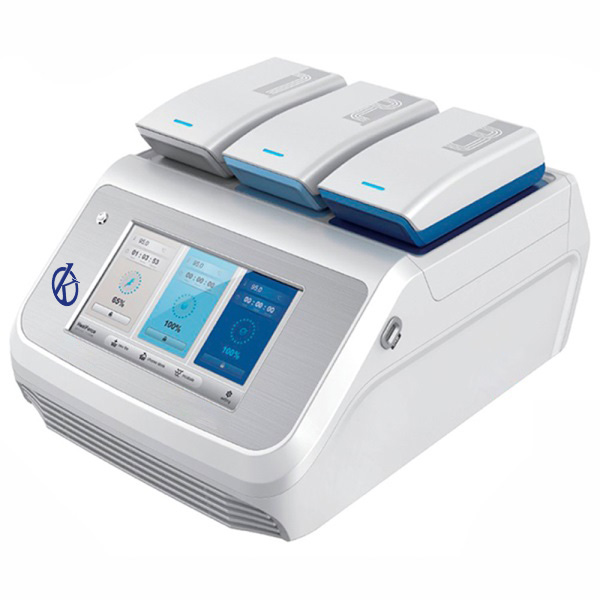In protein engineering applications involving mutagenesis and expression of proteins from recombinant DNA, synthetic genes offer many advantages over the use of naturally occurring cloned genes. By precisely specifying the nucleotide sequence, optimal use of codons for the expression host can be ensured and convenient restriction sites can be incorporated as needed, facilitating mutagenesis and cassette subcloning.
Synthesizing even a relatively small gene has generally been considered a difficult and time-consuming task, best left to specialized laboratories. However, polymerase chain reaction (PCR)-based techniques have been developed and offer advantages, such as:
- Cost savings.
- Labor saving.
- The process of gene synthesis is greatly simplified.
- It has the potential for the synthesis of genes significantly larger than currently established techniques.
Applications of PCR in the obtainment of oligonucleotides and synthetic genes
Synthetic genes are conventionally assembled by concatenation of shorter oligonucleotides. In general, both DNA chains are fully synthesized as short overlapping oligonucleotides that phosphorylate, hybridize, and bind to produce the full-length product. The cost of synthesis can be reduced by synthesizing oligonucleotides that represent the partial sequence of each strand, and the gaps in the hybridized product are “filled” using DNA polymerase prior to ligation.
In practice, both methods give a low yield of the full-length product and require amplification by cloning before any further manipulation of the synthesized gene. Recently, a PCR procedure has been described in which a 234-base oligonucleotide was chemically synthesized and primers were used to amplify any full-length molecule resulting from the chemical synthesis.
Although this procedure effectively increases the length of the sequence that can be synthesized directly with useful yield, the length is still relatively short compared to even a moderate-sized structural gene. Genes can also be assembled using the overlapping extension splicing method, in which PCR products are purified by separating them from their amplification primers and spreading each other to produce a larger product. This product is simultaneously amplified by the inclusion of smaller flanking primers.
How important are oligonucleotides in molecular biology?
Synthetic oligonucleotides can rightly be said to be the fuel that drives the motor of molecular biology. Therefore, the availability of means for the synthesis of these compounds is becoming increasingly important. Almost all the techniques in use today in molecular biology use chemically synthesized DNA or RNA. This includes:
- PCR.
- Real-time PCR.
- DNA sequencing.
- Site directed mutagenesis.
- Single nucleotide polymorphism (SNP) assays.
- Microarrays.
- The rapidly expanding world of small RNAs.
However, unlike other reagents, oligonucleotides are not items that can be stored until they are needed. Each oligonucleotide is custom-manufactured according to the specific needs of the individual investigator and purified according to its intended application. In recent years, advances in oligonucleotide synthesis chemistry, as well as purification and quality control technologies, have led to substantial increases in both quality and yield and to substantial decreases in cost.
For PCR, most primers are in the range of 20 to 28 meters. This means that a standard synthesis will be between 85% and 90% full length. PCR is a very tolerant process in the sense that the overwhelming mass of full-length product will be sufficient to produce the amplicon of interest in an equally overwhelming mass. Thus, for PCR, there is little need for purification beyond desalination that eliminates organic salts generated during the final deprotection process.
Kalstein thermocyclers in oligonucleotide synthesis
Oligonucleotides are essential for the development of molecular biology, and their synthesis using PCR can be carried out with the use of reliable thermocyclists, such as those designed by the manufacturer of Kalstein equipment. Some of these computers come equipped with a touch screen with which you can schedule work or select some of the pre-configured methods, which can be modified and loaded by a compatible program. Pricing, quotation, purchase and other technical details for these devices can be found at HERE and HERE

